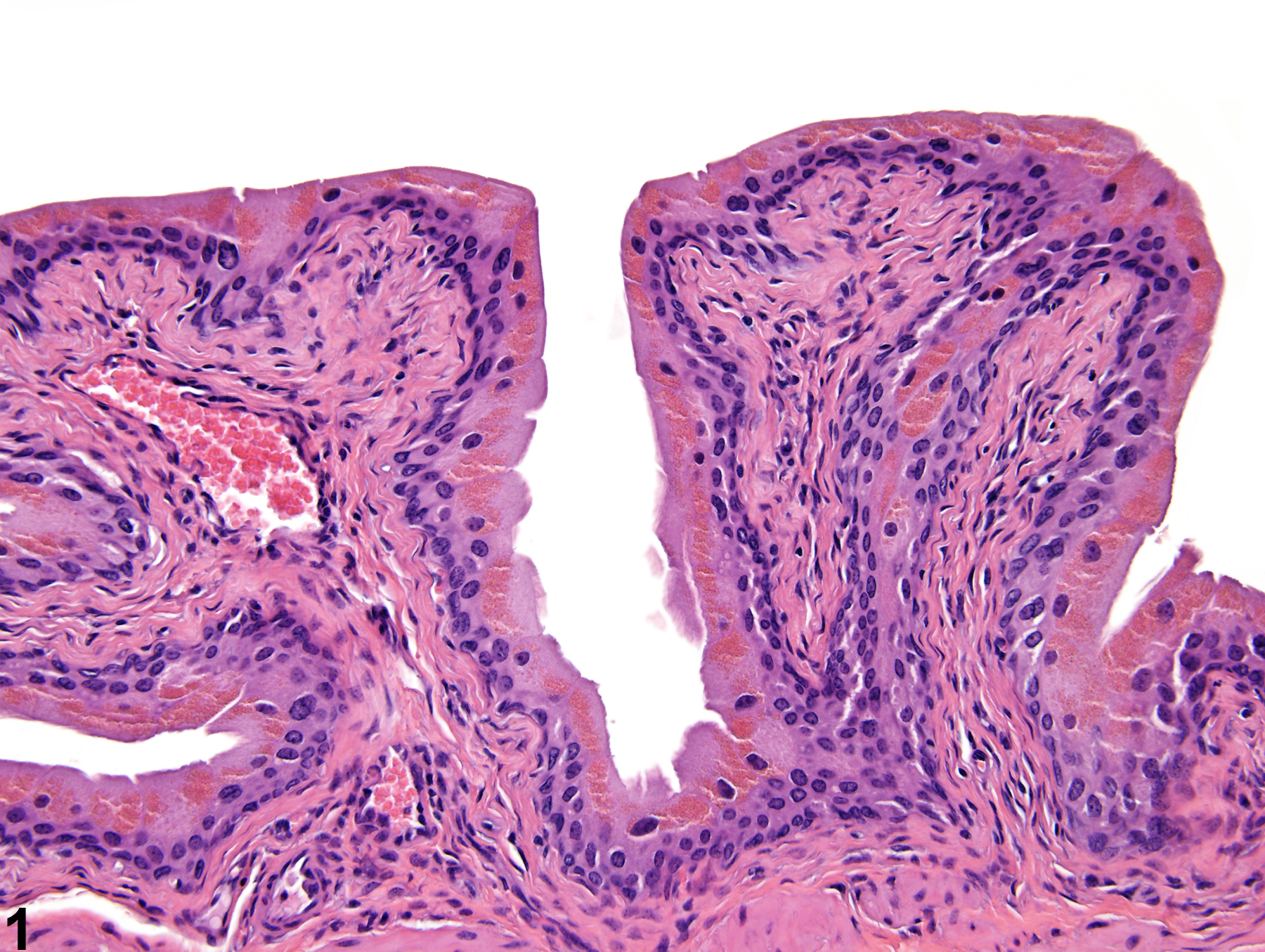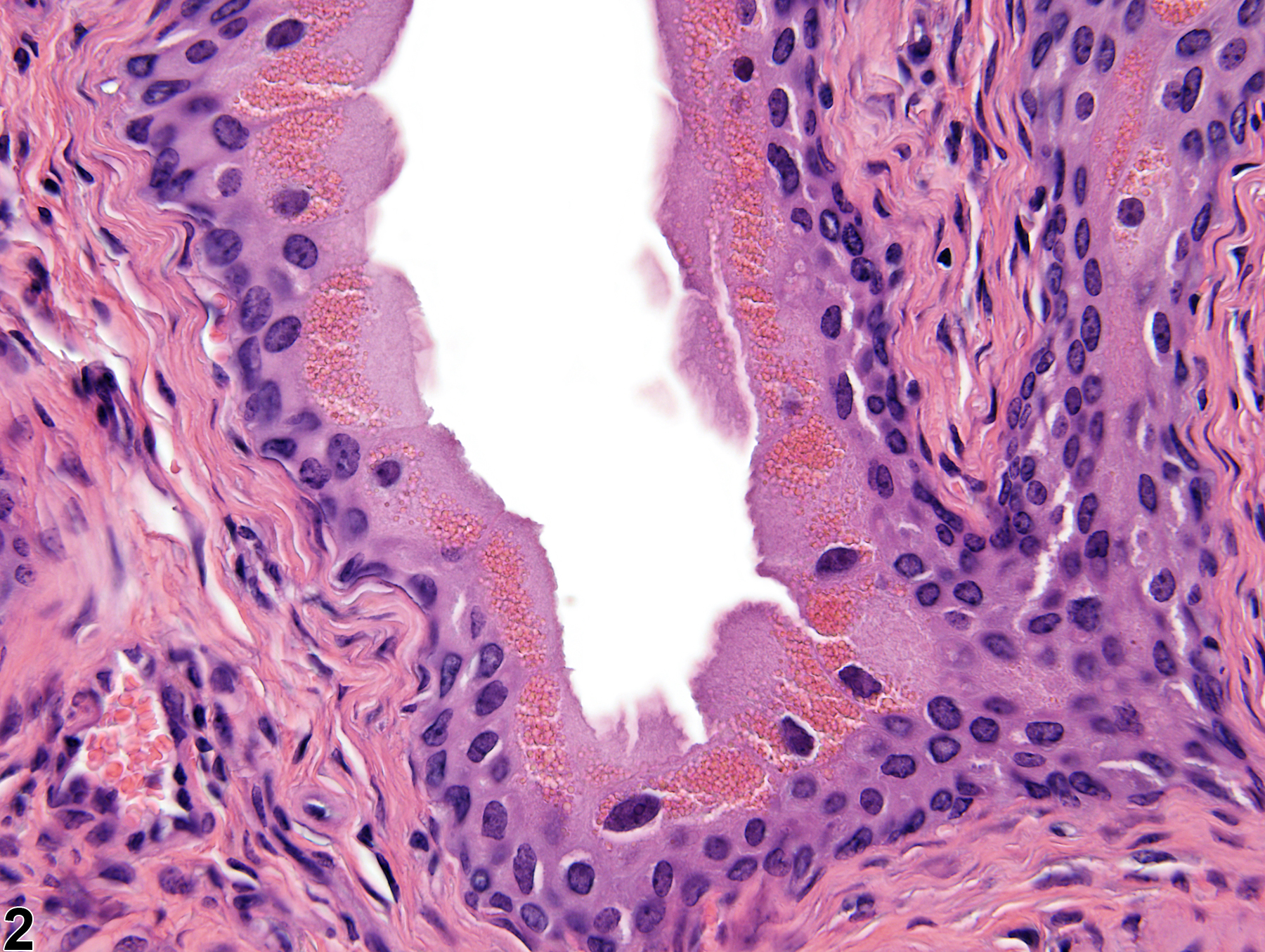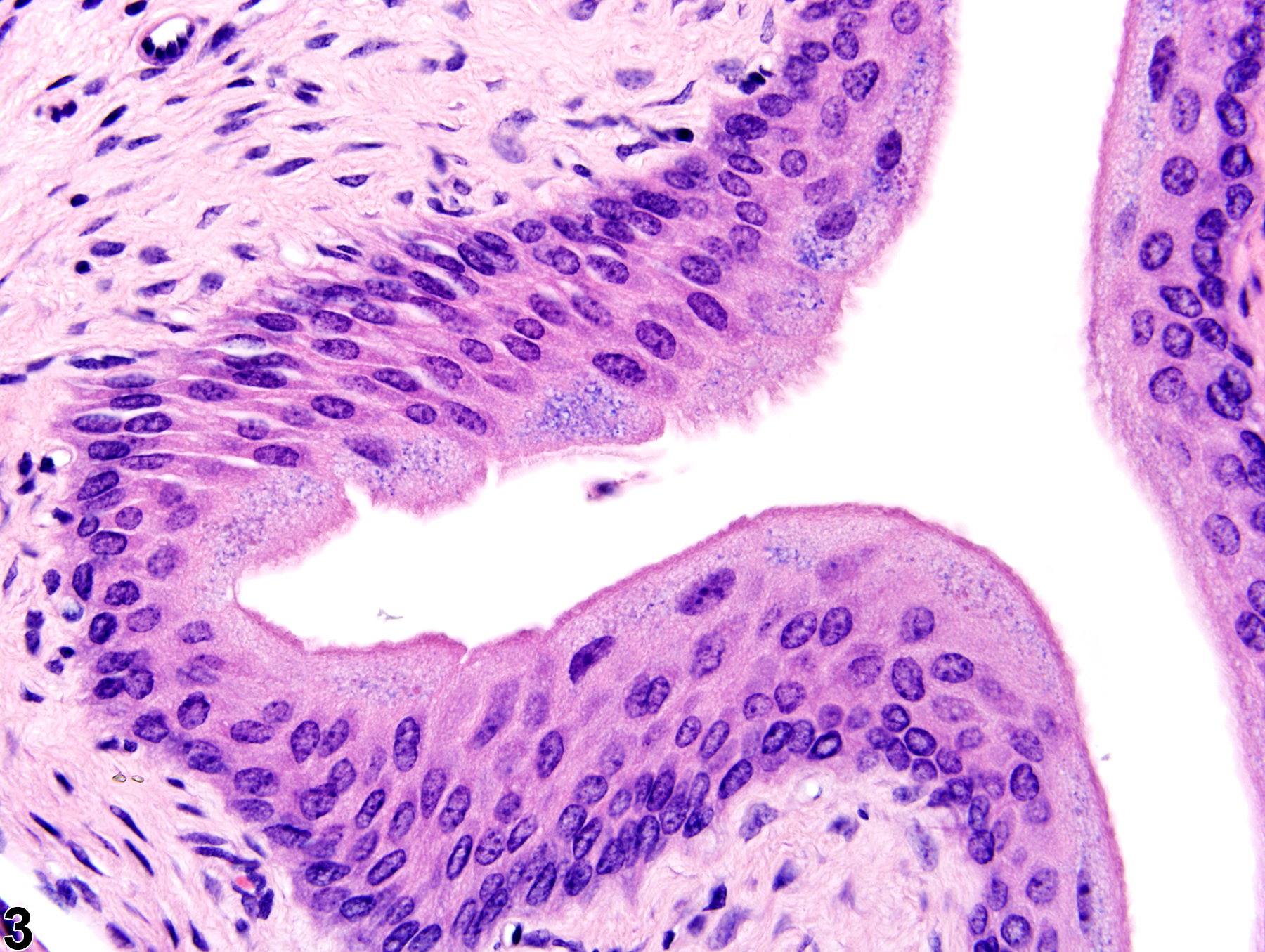Urinary System
Urinary Bladder, Urothelium - Cytoplasmic Granules
Narrative
Cohen SM. 2002. Comparative pathology of proliferative lesions of the urinary bladder. Toxicol Pathol 30:663-671.
Abstract: http://www.ncbi.nlm.nih.gov/pubmed/12512866Frazier KS, Seely JC, Hard GC, Betton G, Burnett R, Nakatsuji S, Nishikawa A, Durchfeld-Meyer B, Bube A. 2012. Proliferative and non-proliferative lesions in the rat and mouse urinary system. Toxicol Pathol 40:14S-86S.
Abstract: http://www.ncbi.nlm.nih.gov/pubmed/22637735Suzuki S, Arnold LL, Muirhead D, Lu X, Le C, Bjork JA, Wallace KB, Ohnishi T, Kakiuchi-Kiyota S, Pennington KL, Cohen SM. 2008. Inorganic arsenic-induced intramitochondrial granules in mouse urothelium. Toxicol Pathol 36:999-1005.
Abstract: http://www.ncbi.nlm.nih.gov/pubmed/19126794
Fine, eosinophilic cytoplasmic granules in the superficial cells of the urothelium from a male B6C3F1 mouse in a subchronic study.




